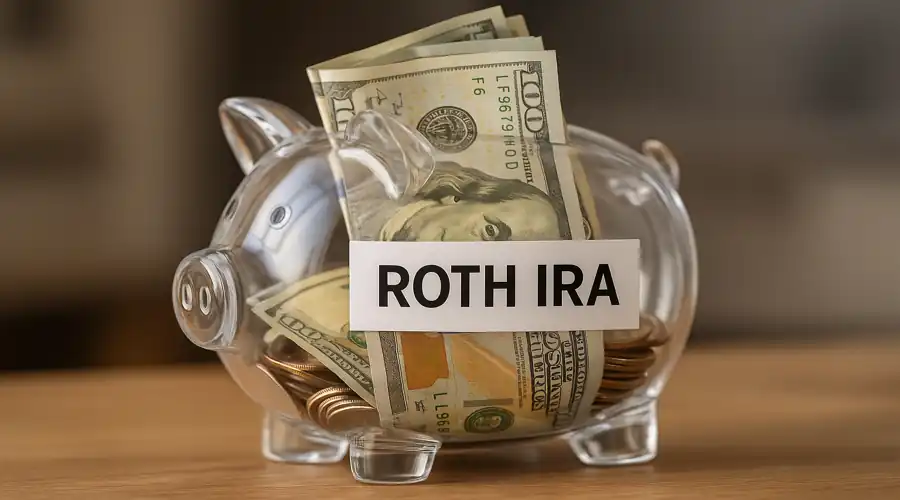When you want to safeguard hard-earned assets from creditors and lawsuits, everyone looks for a solution that can provide security and peace of mind. A domestic asset protection trust (DAPT) can check both of those boxes.
Whether you’re a business owner, a high-net-worth individual, or simply someone looking to protect their financial future, it’ll be valuable to understand how a DAPT works. This can help you make more informed, strategic decisions about your estate planning and future financial legacy.
In this guide, we’ll break down everything you need to know about DAPTs, including when and why you should use one, how they work, and their advantages.
What is a DAPT?
Domestic asset protection trusts are irrevocable trusts that can safeguard your assets from creditors while still allowing you to benefit from them.
Unlike traditional trusts, a DAPT provides a shield against potential lawsuits, making it a powerful estate planning tool for wealth protection.
By transferring assets into a DAPT, you place them outside the reach of creditors—so long as you comply with state-specific rules and operate within a legal waiting period.
Who Should Consider Using a DAPT?
A DAPT isn’t necessary for everyone. But it can be incredibly beneficial if you fall into any of the following categories:
- Business owners and entrepreneurs: If you own a business, you may face liability risks. A DAPT can help protect your personal assets from liability suits that might otherwise endanger your financial holdings.
- Doctors, lawyers, and professionals in high-risk fields: If your profession exposes you to malpractice claims or similar legal actions, shielding personal assets with a DAPT is a smart move.
- Real estate investors: Property ownership comes with legal and financial risks. A DAPT can serve as an added layer of security against creditors.
- Wealthy individuals and high-net-worth families: If you hope to pass on wealth to your family without worrying about legal battles or the demands of lenders, a DAPT can ensure your financial legacy remains intact.
How Does a Domestic Asset Protection Trust Work?
The mechanics of a DAPT are relatively straightforward:
- Wait out the statutory period: Most states require a waiting period (typically 2-4 years) before the DAPT trust’s protection fully kicks in against existing creditors.
- Create the trust: Form a domestic asset protection trust in a state that allows them, such as Nevada, Delaware, or Alaska.
- Transfer assets into the trust: Move selected assets (cash, investments, real estate, etc.) into the DAPT.
- Appoint a trustee: – The trustee (who cannot be you) manages your transferred assets in accordance with the trust’s terms.
- Benefit from the trust: While you no longer own the trust-held assets directly, you can still receive distributions and use thodse funds over time.
Can a DAPT Protect Assets from Creditors?
As we mentioned earlier, a properly structured DAPT can legally shield assets from future creditors and lawsuits. However, it does not provide impenetrable protection against:
- Existing debts: If you already owe money, transferring assets into a DAPT may be considered fraudulent, exposing you to potential criminal liability.
- Divorce settlements: In some states, a DAPT may not protect assets from divorce claims.
- IRS claims: The federal government can still pursue your assets to collect on unpaid taxes.
- Child support obligations: A DAPT cannot be used to evade child support payments.
If it’s absolute MAXIMUM protection you seek, It’s crucial to work with a qualified estate planning attorney when setting up a DAPT to best ensure that you establish the most possible protection for your assets.
What Are the Advantages of a DAPT?
Using a domestic asset protection trust offers several key benefits:
- Lawsuit protection: Your assets are safeguarded from potential legal claims and creditors.
- Estate planning benefits: Helps preserve wealth for future generations while minimizing estate taxes.
- Retained benefits: Unlike other trusts, you can still receive distributions from a DAPT while alive.
- Peace of mind: The trust provides a layer of legal security to ensure your financial future remains intact.
- Flexibility: Certain DAPT states allow you to maintain some control over the trust without compromising its protective features.
How Much Does a Domestic Asset Protection Trust Cost?
The cost of setting up a DAPT varies based on factors like the complexity of the trust and state laws. Generally, the expenses include:
- Initial setup: – This typically ranges from $2,000 to $10,000, depending on attorney fees and trust structuring.
- Ongoing maintenance: Annual costs may include trustee fees, administrative expenses, and costs related to legal compliance. These generally range from $500 to $3,000 per year.
While these costs may seem high, the protection and peace of mind a DAPT provides can be well worth the investment.
Is a DAPT Right for You?
Overall, a domestic asset protection trust can be valuable for anyone looking to protect wealth from future creditors, lawsuits, and financial uncertainty.
If you’re serious about safeguarding your assets, consult a knowledgeable attorney about setting up a DAPT. A lawyer with extensive estate planning experience will help you form a DAPT that best suits your needs – or, if necessary, assist you in setting up a different, more appropriate type of trust.
Take Action
Looking for more unique tax-saving strategies you can use right now? Start with our free Tax Guide, featuring insider tips, little-known deductions, and 30+ ways to lower your tax bill.
If you’re a CPA, EA, broker, attorney, or planner, check out the Main Street Certified Advisor program. It’s all about helping your clients win (and growing your business while you’re at it).
To learn more, call us at 520-800-0986 or book your free discovery call with a member of our friendly team.
Frequently Asked Questions
Which states allow domestic asset protection trusts?
As of April 2025, 21 states have laws on the books allowing the formation of DAPTs: Alabama, Alaska, Arkansas, Connecticut, Delaware, Hawaii, Indiana, Michigan, Mississippi, Missouri, Nevada, New Hampshire, Ohio, Oklahoma, Rhode Island, South Dakota, Tennessee, Utah, Virginia, West Virginia, and Wyoming.
Some states use different terms for these trusts: Indiana and Ohio call them “legacy trusts,” while Wyoming has “discretionary asset protection trusts” and “qualified spendthrift trusts.”
It’s critical to understand the specific laws governing DAPTs in your state before moving to set one up – which is exactly why you should seek the assistance of an experienced attorney.
What is the statute of limitations on a domestic asset protection trust?
For a certain period immediately after the formation of a DAPT, creditors have the right to challenge the trust.
Ohio and Tennessee have the shortest statutes of limitations, at just 18 months. In Alabama, Arkansas, Hawaii, Indiana, Michigan, Mississippi, Nevada, South Dakota, Utah, and Wyoming, there’s a two-year statutory period.
For all but one other DAPT state, the statute of limitations is four years, while Virginia alone allows five years for trust challenges.
What are the requirements for a DAPT (or its equivalent)?
The specifics of DAPT requirements vary quite a bit from state to state. However, there are certain common rules:
Revocability:DAPTs must be irrevocable trusts in nearly all states that allow them. As such, the trust’s grantor or settlor (you) can only receive assets at the trustee’s discretion.
Thus far, Oklahoma is the only state to allow revocable DAPTs. In such cases, settlors can amend trust terms or withdraw assets at their discretion, but the funds may not be as well-protected from creditors.
Trustee requirements: In many states, a DAPT trustee must be a resident of that state, a state-authorized organization, or a financial institution (usually a bank or savings and loan company) with a presence in the state.
Alaska and New Hampshire place zero restrictions on who the trustee must be. Alabama, Arkansas, Michigan, Mississippi, Nevada, Ohio, South Dakota, Tennessee, Utah, Virginia, West Virginia, and Wyoming allow settlors to be trustees, but generally place some restrictions on their ability to distribute assets. In all other DAPT states, settlors cannot be trustees.
In-state holdings and administration: Most states require at least some assets in a DAPT to be held in the state of the trust’s creation, demand that trust administration occur at least partially in-state, or both. Alaska, Indiana, New Hampshire, South Dakota, and Utah don’t specifically demand either of these conditions be met. But except for Alaska and New Hampshire, requirements regarding the trustee effectively ensure it’ll be administered or held partially in-state.
Spendthrift clauses: DAPTs must generally include a spendthrift clause (or provision), placing at least some restrictions on settlor or grantor access to the trust’s assets. Even states that don’t specifically require these clauses effectively impose them on DAPTs through other requirements that the trustee or settlor must meet.
Legal jurisdiction: DAPTs must include language declaring that they are fully or partially governed by the laws of the states in which they’re formed.
There are some exceptions. This requirement doesn’t hold in South Dakota or Alaska if the DAPT has been transferred from out of state to an in-state trustee. Nevada, Missouri, and Arkansas don’t require this declaration at all, but DAPTs in those states are still subject to various restrictions.









